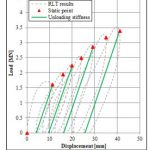The rebirth of traditional SIT interpretation methods to incorporate engineering judgement in present-day data analysis
Titel |
The rebirth of traditional SIT interpretation methods
|
 The rebirth of traditional SITinterpretation methods to incorporate engineering judgement in present day data analysis |
Author(s) |
Bielefeld, M; Delft, M. van; Bakker, J |
|
Year |
2022 |
|
Language |
English |
|
Where |
11th Int Stress Wave Conference, Rotterdam, The Netherlands |
|
Cite as |
Bielefeld, M, Delft, M. van, & Bakker, J. (2022, September 20). The rebirth of traditional SITinterpretation methods to incorporate engineering judgement in present day data analysis. 11th International Conference on Stress Wave Theory and Design and Testing Methods for Deep Foundations (SW2022), Rotterdam, The Netherlands. https://doi.org/10.5281/zenodo.7141730 |
ABSTRACT:
The method of Sonic Integrity Testing (SIT) was developed many decades ago, at a time when the only pile testing method available was Static Load Testing. SIT was designed to test cast-in situ piles or bored deep foundations, and because of this test method cast in-situ piles (including Continuous Flight Auger (CFA) -piles) became popular in Western Europe. As the main QA method for this pile type, the application of cast in-situ piles increased the popularity of SIT and vice versa.
SIT became even more popular when digital testing equipment was developed. Easy to operate hardware and user-friendly software started to become available in the 1960s. But while the testing engineers of the first hours were used to dealing with the uncertainties associated with this test method, newer generations of engineers became increasingly just operators, relying more and more on automated interpretation algorithms. However, engineering judgement is still required from the testing engineers, as pile testing is more than simply operating a test kit and pushing the right buttons at the right moment.
This paper provides some examples of how 'old school' experience with this test method is still very relevant for the interpretation of 'modern' signals, such as the use of a site average to eliminate the soil impact (shaft friction and toe resistance) on the signals, as well as the pile signature to minimize false negative and false positive interpretations. In addition, advanced signal matching techniques for SIT data will be described as a useful method to quantify and visualize test results.
DOWNLOAD:
You can download the entire article here after entering your name and e-mail address:




